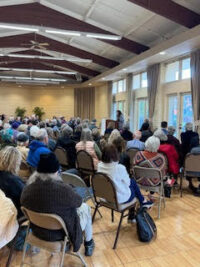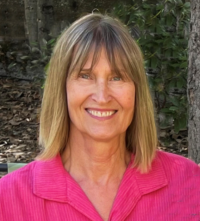What might a new earthquake-safe Sonoma Valley Hospital look like?
A single-story wood-frame hospital would be the safest in a quake, said Roger Richter, a vice president with the California Hospital Association.
The aptly named Richter gave an update on seismic issues for California hospitals at the Oct. 16 meeting of the Sonoma Valley Health Care Coalition. It’s the group that formed to try to keep hospital services going in the Valley after voters shot down Measure C, the May ballot proposal to build a new $148 million hospital.
“Can a single-story wood-frame building be constructed to meet the needs of the community?” Richter asked an audience of about 50 people gathered at the Vintage House senior center, the location of the coalition’s 7 p.m. Monday meetings.
Wood-framed one-story buildings, such as the typical ranch house, have enough strength and flexibility to ride out quakes pretty well, Richter said.
“But they have to be anchored to a foundation. Otherwise, they’ll look fine but they’ll be a foot or two off the foundation,” he told the Sun.
By contrast, it’s possible to build an overly rigid structure, such as the Santa Clara county building that Richter mentioned.
“They overbuilt it and it was like a tuning fork in the (1989 Loma Prieta) earthquake,” he said.
The county building survived, Richter said, but “inside, everything was flipped” – desks and office furniture had been tossed about chaotically.
Richter discussed Senate Bill 1953, the law that came into existence after the 1994 Northridge earthquake. It requires all of California’s acute-care hospitals to retrofit or rebuild so that by 2013, the hospitals will remain standing after a major earthquake. By 2030, the law requires that hospitals not only remain standing but also remain operational after a major quake.
One of Richter’s points took some audience members by surprise: Senate Bill 1953 requires hospitals to have 72 hours’ worth of emergency water and emergency sewage storage by 2030.
If the Sonoma Valley Health Care District builds a new hospital, Richter recommends that they hire designers and contractors who are experienced working with OSHPOD, the Office of Statewide Health Planning and Development, which handles hospitals’ compliance with seismic safety standards.
“So few firms (are) qualified to work with OSHPOD,” he said.
“California hospitals are the most complex buildings to build in the world,” Richter said, adding, “Hire a project manager.”
And time is running short for submitting plans to build a new Sonoma Valley Hospital to meet deadlines outlined in Senate Bill 1953.
“You really have to have your plans in… in about a year,” Richter said.
The Sacramento-based California Hospital Association does advocacy; its members include nearly 500 California hospitals and health systems.






